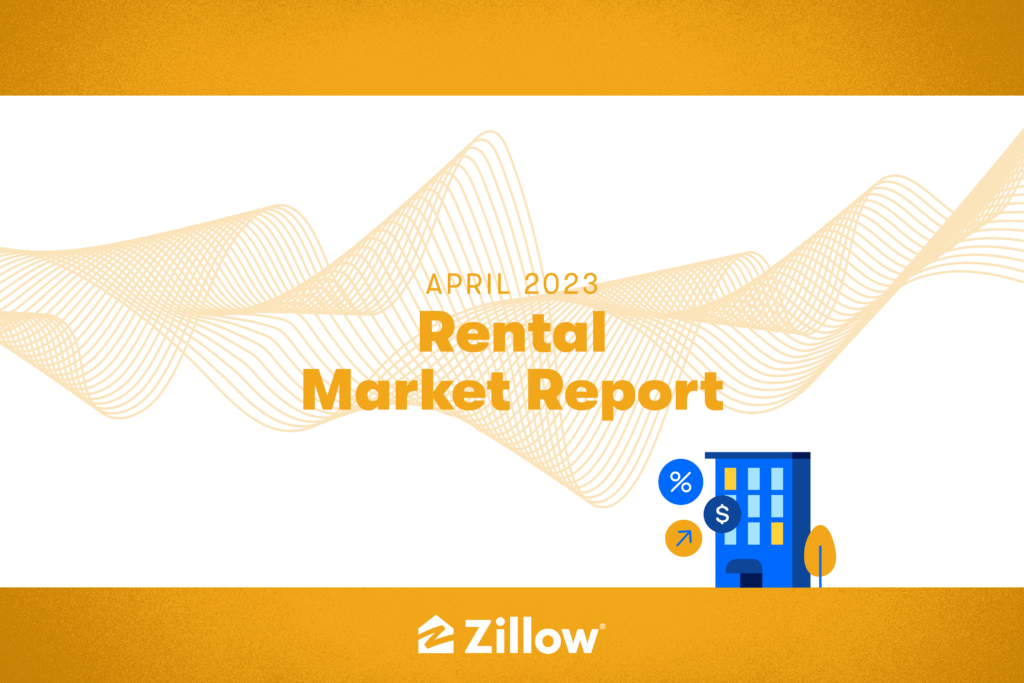Asking Rents Kept Climbing at a Slightly Subdued Pace (April Rent Report)
Official rental inflation looks poised to finally decelerate.

Official rental inflation looks poised to finally decelerate.

Asking rents climbed by $12, or 0.6%, from March to April, according to the latest edition of the Zillow Observed Rent Index (ZORI). That brings the index to $2,018, for a cumulative 1.3% increase since its recent low point in January, at $1,991. The 0.6% monthly increase is slightly smaller than the typical April increase of 0.7%, averaged over data from 2016 to 2019, suggesting that today’s growth is still driven mainly by seasonal factors, and that overall leasing conditions are still somewhat cool for this time of year. Typical asking rents at the national level now stand at $2,018, which is 5.3% higher than one year ago, and 0.5% higher than the peak of $2,008 observed in September 2022. That annual growth rate is now down almost 12 percentage points from the peak growth rate of 16.9%, the record-high pace reached in February 2022.
Rents rose the most on a monthly basis in Providence (1.7%), San Diego (1.3%), Hartford (1.3%), New York (1.3%), and Boston (1.2%). Broadly, these data confirm the continuation of a strong spring leasing season for rental homes in the Northeast. It likely also reflects the continued process of more workers returning to offices, boosting rental demand in those cities.
The slowest monthly growth in rent was observed this April in Buffalo (0.1%), Portland, Oregon (0.1%), San Antonio (0.1%), Sacramento (0.2%) and Miami (0.3%). None of the 50 largest metropolitan areas had monthly declines, suggesting that the return to rent growth has been broad-based.
Annual rent growth was highest in Boston (8.5%), Cincinnati (8.1%), Providence (8.0%), Louisville (7.5%), and Kansas City (7.5%). Just outside the top 5 were Hartford (7.0%), Indianapolis (6.9%) and Milwaukee (6.8%). This continues a consistent story, ever since the national market began its cooldown just over a year ago, that the most resilient rental markets have been affordable Midwestern and Northeastern cities, plus Boston.
The weakest year-over-year rent growth can mostly be found out West. On a year-over-year basis, rents are down 1.2% in Las Vegas, and have increased the least in: Phoenix (0.7%), New Orleans (1.4%), Austin (1.8%), and San Francisco (2.1%). These represent major slowdowns from the very high annual growth rates one year ago in Las Vegas (21.4%), Phoenix (21.9%), and Austin (20.5%), and another consecutive year of relatively low rent growth in San Francisco (11.0% in the year through April 2022).
The most expensive major market is San Jose, where typical monthly rent is $3,289, followed by New York ($3,229), San Francisco ($3,122), San Diego ($3,040), and Boston ($2,978).
Six months ago, we urged inflation watchers to mark their calendars to see if official measures of annual rent inflation would begin to decelerate in the March 2023 data, to be released this April. That prediction was based on research showing that annual growth in the Consumer Price Index’s Rent of Primary Residence component follows changes in annual ZORI growth with a 12-month lag. Since the year-over-year change in ZORI began to decline in March 2022, a 1-year lag would imply deceleration in CPI should begin this March.
Arguably that prediction has nearly come to pass: The annual growth rate of CPI-Rent was 8.8% in March, unchanged (after rounding) from the 8.8% annual growth rate in February. The flatlining annual growth rate arrived thanks to a sudden plunge in the monthly growth rate, which fell to a compounded annual growth rate of 5.6%, far below its pandemic-era peak of 11.1% in September of 2022. The monthly data series is volatile, so it is possible that the annual growth rate bounces around near its current 8.8% level for a few months, but the data this spring seems to confirm that we are somewhere near the summit for official annual CPI rent inflation, and the deceleration of asking rents measured by private-sector indices like ZORI should eventually flow through into the CPI.